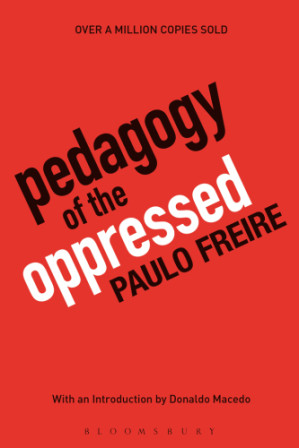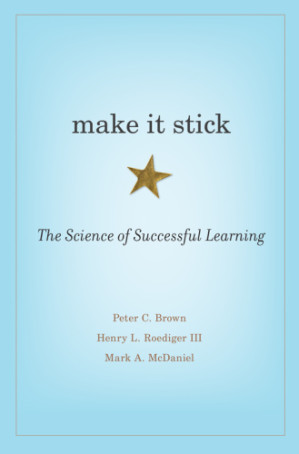Property tax funding creates permanent educational castes.
Schools in wealthy suburbs spend $15,000 per student while inner-city schools struggle with $5,000 budgets.

Book summary
by Jonathan Kozol
Children in America's Schools
Exposes shocking disparities in American public school funding
Topics
Read this investigative work with a focus on the specific funding mechanisms and policy choices that create educational inequality. Use Readever to track the stark contrasts between schools in different communities and the human impact of these disparities. After each chapter, reflect on how these patterns manifest in your own community and what actions you could take to advocate for educational equity.
Things to know before reading
Savage Inequalities documents Jonathan Kozol's two-year investigation into America's public school system, revealing how funding disparities create vastly different educational experiences for children based on race and class. Through vivid portraits of schools in East St. Louis, the Bronx, and Chicago, Kozol exposes how property tax-based funding systems perpetuate cycles of poverty and privilege.
*Savage Inequalities* reveals how America's education system systematically disadvantages poor and minority students through funding formulas, resource allocation, and political neglect.
Schools in wealthy suburbs spend $15,000 per student while inner-city schools struggle with $5,000 budgets.
In Chicago, 95% of Black students attend schools that are at least 90% minority.
East St. Louis schools lack working toilets, heat, and basic supplies while suburban schools have Olympic-sized pools.
Ready to continue? Launch the Readever reader and keep turning pages without paying a cent.
This summary equips you with the evidence and language to challenge educational disparities in your community. You'll learn how funding mechanisms, zoning policies, and historical patterns create separate and unequal school systems—and what citizens can do to demand equity.
Key idea 1
Schools in wealthy suburbs spend $15,000 per student while inner-city schools struggle with $5,000 budgets.
Kozol demonstrates how reliance on local property taxes guarantees that wealthy communities can fund lavish facilities, small class sizes, and enrichment programs, while poor districts face crumbling infrastructure, overcrowded classrooms, and minimal resources. This funding disparity isn't accidental—it's built into the system through state laws that privilege local control over educational equity.
Remember
Key idea 2
In Chicago, 95% of Black students attend schools that are at least 90% minority.
Despite Brown v. Board of Education, Kozol finds schools more segregated than ever through housing patterns, district boundaries, and white flight. He documents how predominantly Black and Hispanic schools receive fewer resources, less experienced teachers, and inferior facilities compared to nearby white schools. The segregation isn't just racial—it's educational, with minority students systematically denied the opportunities available to their white peers.
Remember
Key idea 3
East St. Louis schools lack working toilets, heat, and basic supplies while suburban schools have Olympic-sized pools.
Kozol's descriptions of school facilities reveal how society values different children. In East St. Louis, he finds sewage backing up into classrooms, broken windows, and textbooks from the 1960s. Meanwhile, in nearby affluent suburbs, schools feature state-of-the-art science labs, performing arts centers, and multiple athletic facilities. These physical differences teach children powerful lessons about their worth and society's investment in their future.
Remember
Savage Inequalities: Children in America's Schools is Jonathan Kozol's landmark investigation into the vast disparities between public schools serving wealthy, predominantly white communities and those serving poor, minority neighborhoods. Based on two years of research visiting schools across the country, Kozol documents how funding systems based on local property taxes create separate and unequal educational experiences.
The book examines schools in East St. Louis, Chicago, New York City, Camden, and Washington D.C., contrasting the resources, facilities, and opportunities available to children based on their zip codes. Kozol argues that these inequalities aren't accidental but reflect deliberate policy choices that privilege wealthy communities while abandoning poor ones.
Open Readever's reader to highlight passages, ask the AI companion questions, and keep exploring without paying a cent.
Kozol's writing combines meticulous research with powerful storytelling, allowing readers to see educational inequality through the eyes of children, teachers, and administrators. His method of letting the conditions speak for themselves—through detailed descriptions of facilities, budgets, and classroom experiences—makes the book both emotionally compelling and intellectually rigorous.
Critical Reception: Savage Inequalities became an instant classic in education literature, praised for its unflinching examination of systemic inequality. It was a finalist for the 1992 National Book Critics Circle Award, won The New England Book Award for nonfiction, and has been cited in numerous court cases challenging school funding systems. The book remains essential reading for educators, policymakers, and anyone concerned with educational equity.
Educators and school administrators seeking to understand systemic inequality
Policy makers and advocates working on education reform
Parents concerned about educational equity and school funding
Students of education policy, sociology, and social justice
Citizens wanting to understand how school systems perpetuate inequality
Jonathan Kozol (born September 5, 1936) is an American writer, educator, and activist best known for his books on public education and social justice. After graduating from Harvard University, he taught in the Boston public schools, an experience that inspired his first book, Death at an Early Age, which won the National Book Award in 1968.
Kozol has spent his career documenting educational inequality and advocating for reform. His research method involves extensive fieldwork—visiting schools, interviewing students and teachers, and observing classroom conditions firsthand. In addition to Savage Inequalities, his influential works include Amazing Grace, The Shame of the Nation, and Fire in the Ashes. He has received numerous awards for his writing and activism, including the National Book Award, the Robert F. Kennedy Book Award, and fellowships from the Guggenheim and Rockefeller foundations.

Paulo Freire
Revolutionary education theory empowering oppressed through critical consciousness

Daniel T. Willingham
Cognitive scientist explains how minds learn and remember

Brown, Roediger, & McDaniel
The science of successful learning and evidence-based study strategies
Build your personalized reading stack
Download full-length ePubs in one click with personal cloud storage.
Blend AI-guided insights with tactile note-taking to accelerate reflection.
Follow curated reading journeys tailored to your goals and time budget.
Sync highlights across devices so lessons stick beyond the page.
Sign in to Readever to keep reading with AI guidance, instant summaries, and synced notes.
Savage Inequalities demonstrates that educational disparities are not natural or inevitable but the result of deliberate policy choices. Kozol's work challenges the myth of equal opportunity in America and shows how school funding systems perpetuate cycles of poverty and privilege. The book remains a powerful call to action for anyone who believes that every child deserves access to quality education, regardless of their zip code or family income.
Kozol's investigation reveals that the property tax-based funding system creates a self-perpetuating cycle of inequality. Wealthy communities with high property values can fund excellent schools, which in turn increases property values further. Poor communities face the opposite: low property values mean inadequate school funding, which contributes to community decline. This creates what Kozol calls "savage inequalities"—not just differences, but fundamentally different educational experiences that determine life outcomes.
Beyond statistics, Kozol captures the human impact of these disparities. He describes children who attend schools without working heat in winter, schools where sewage backs up into classrooms, and schools that lack basic supplies like paper and textbooks. These conditions aren't just inconvenient—they communicate to children that society doesn't value their education or their future.
Despite Brown v. Board of Education's promise of integrated schools, Kozol finds schools more segregated than ever. He documents how housing patterns, district boundaries, and white flight have created what he calls "apartheid schools"—schools that are 99% minority and 99% poor. This segregation isn't just racial; it's educational, with minority students systematically denied the resources and opportunities available to white students.
Kozol's work has been cited in numerous court cases challenging school funding systems. The book demonstrates that equal educational opportunity requires equitable funding, not just equal funding. Schools serving disadvantaged students often need more resources, not the same resources, to overcome historical disadvantages.
The book argues for a stronger federal role in education funding to overcome local disparities. Kozol suggests that education should be treated as a fundamental right, with federal guarantees of minimum funding levels and quality standards.
While acknowledging the challenges of integration, Kozol argues that separate will never be equal. He calls for creative approaches to integration that acknowledge both the benefits of diverse schools and the need to preserve community identity.
Savage Inequalities remains remarkably relevant decades after publication. Many of the schools Kozol documented continue to face similar challenges, and funding disparities persist in most states. The book provides essential context for understanding contemporary debates about school choice, charter schools, and education reform.
Kozol's work reminds us that educational inequality isn't an accident—it's the result of policy choices. Changing those choices requires both political will and public awareness of the human cost of inequality.
Start reading Savage Inequalities for free and unlock personalized book journeys with Readever.